Search this site ...
Contemporary African clothing
Africa remains an exciting source of inspiration for designers as there is such a wealth of historical and culturally-based pattern and ornamentation.
African tribal communities have always placed great value on the decoration of architecture, artifacts, textiles and utility items which allows for a vast source of starting points to work from. Traditional fabrics, tribal costumes and adornment provide a wealth of reference for contemporary African designers.
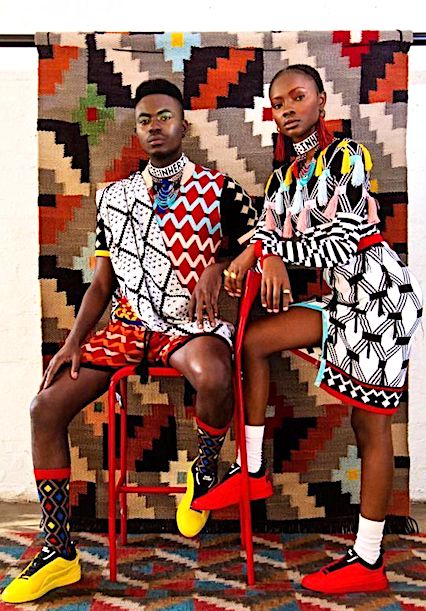 Laduma MaXhosa, tribal collection
Laduma MaXhosa, tribal collectionMood boards are a visual point for designers to showcase their collections... and the source of their inspiration
In the range below, African motifs and ornamentation are combined with strong graphics, photo prints and vibrant colour combinations to create a dynamic and original fashion statement.
Ankara fabric
Dutch wax or Ankara fabric provides huge inspiration for designers and is used by many in a highly contemporary way that allows creative expression of colour and mix-matching of prints.
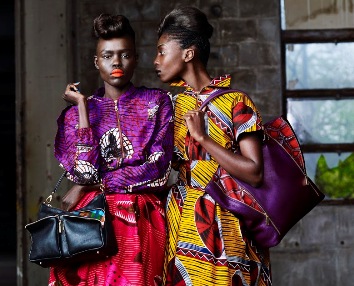
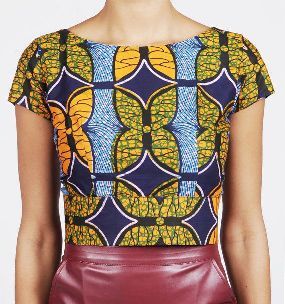
Lisa Folawiyo from Nigeria is the Queen of the Ankara, embellished garment. Her stunning designs are exuberant, using mix and definitely-not-match fabrics in layers and structures that pay homage to her background while being excitingly very modern.
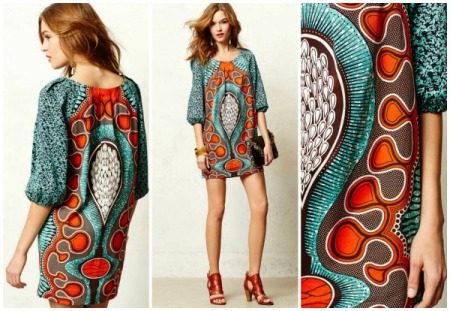 Mille Collines, ankara fabric
Mille Collines, ankara fabricContemporary African fashion
African designers have continued to break new ground reaching inspiring heights of ingenuity and creativity.
Africa is becoming a truly global force in the fashion industry and there are many fabulous fashion designers based both in Africa and abroad who are making waves with their signature styles.
Currently, African contemporary clothing is firmly and rightly placed in the glow of the spotlight!
Black models are featured prominently in magazines and on the catwalks and the whole fashion industry continues to thrive. British Vogue released an edition in February 2022 that featured 9 first-generation African models in its first ever fashion cover statement.
Fashion weeks in major cities such as Cape Town, Johannesburg, Lagos and Accra are growing in strength and creativity and showcase the talent that is obviously evident.
Contemporary Designers
Below are some of the most recognized contemporary designers working on the African continent who have created their own unique styles and fashion lines.
- Marianne Fassler b 1949, SA
- Oumou Sy b 1952, Senegal
- Duro Olowu b 1965, Nigeria
- Imane Ayissi b 1968, Cameroon
- Lisa Folawiyo b 1976, Nigeria
- Laolu Senbanjo b 1982, Nigeria
- Thebe Magugu b 1993, South Africa
- Aisha Obuobi b Ghana - 'Christie Brown'
- Adebayo Oke-Lawal b Nigeria, 'Orange Culture'
- Kibonen Nfi b Cameroon - 'Kibonen NY '
- Loza Maleombho b Brazil
- Ugochukwu Monye b Nigeria - 'Ugo Monye'
- John Tchoudi b Cameroon - 'SIKA'A'
- Ituen Basi b Nigeria
- Priya Ahluwalia b UK - 'Ahluwalia'
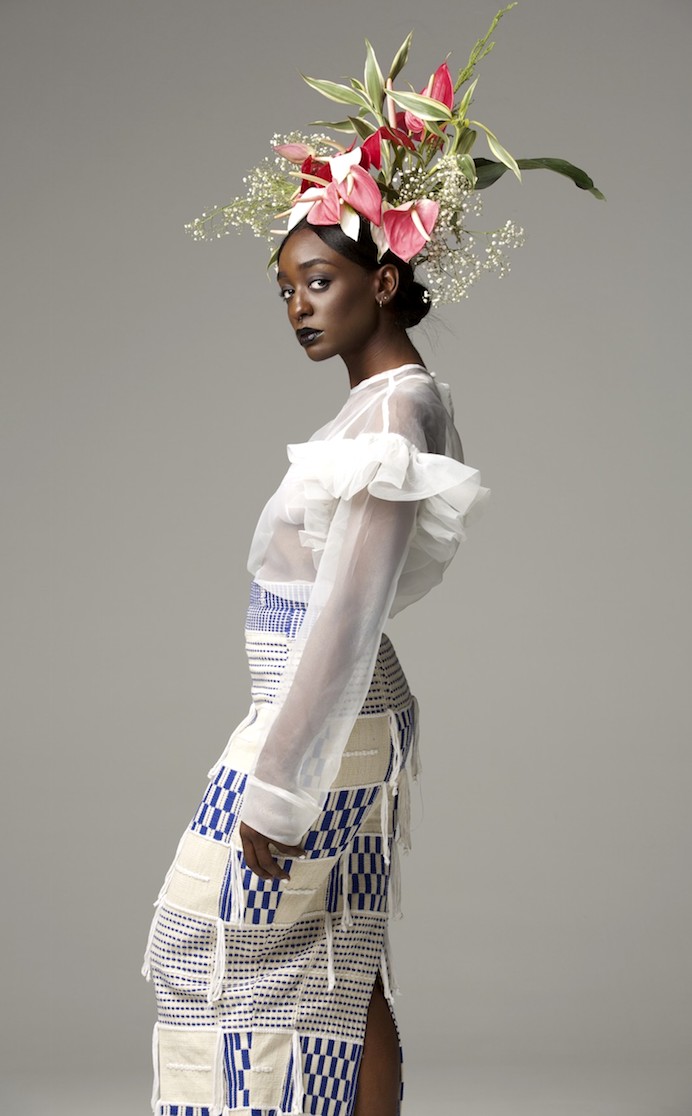 Loza Maleombho
Loza MaleombhoMaxhosa
With MaXhosa created in 2012, Laduma Ngxokolo pays tribute to his African identity by producing an exciting and innovative men's knitwear range that pays homage to his past and to his own deeply personal traditions and cultural experiences.
The designs reflect the famed beadwork of his Xhosa clan and he often uses fine beading work sewn into his geometric shapes.
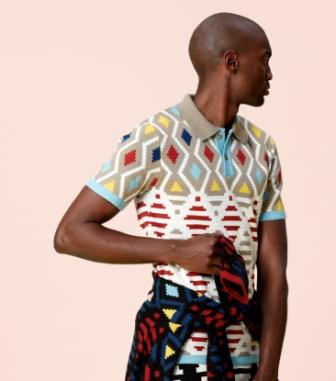 MaXhoso menswear
MaXhoso menswearHe has aimed it at young men who have come through their initiation rites to enter society as young men, culturally aware of their past but modern enough to pursue self-expression.
These are statement pieces of attire, befitting their wearer's passage of ritual. Contemporary in style, the designer uses South African materials like premium mohair and wool and bright colors often contrasting with black to create his one-of-a-kind garments.
Dumela Clothing Co
This Company custom makes Coats and Jackets from the traditional BASOTHO blanket. This iconic blanket is re-envisioned as contemporary stylish coats and jackets for both men and women.
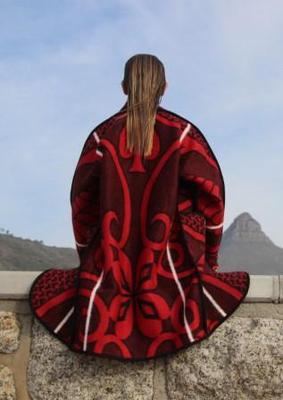
Sindisi Khumalo
Sindiso Khumalo is currently at the top of her game, creating a unique range of Womens Wear which reflects both her architectural background and her Zulu and Ndebele heritage.
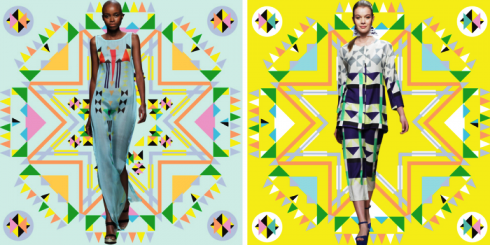 Sindisi Khumalo, womens wear
Sindisi Khumalo, womens wearShe uses bold, bright colours and geometrically styled prints in her fabrics while incorporating simple but dramatic outlines in her garments.
Orange Culture
Since its inauguration in 2011, Orange Culture has gone from strength to strength until reaching the heights its obtained today on the contemporary world fashion stage.
Adebayo Oke-Lawal is the Nigerian designer at the forefront of the brand. He recognizes that fashion can be a way to communicate status, wealth, personal taste and success. Exploring the marriage between Nigerian colors, prints and textiles he creates new silhouettes to give an urban twist to modern African outfits. Sustainability is integral to the range.
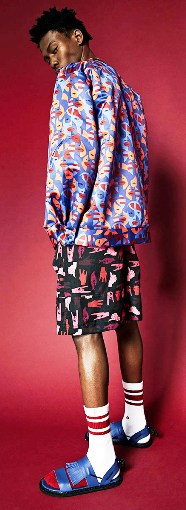 Adebayo Oke-Lawal, Orange Culture Label
Adebayo Oke-Lawal, Orange Culture LabelOrange Culture's style includes bold, solid-coloured suits, printed fabrics and fila hats to adorn and complement the outfit. While fila hats are traditional attire and different tribes have different shapes, the styles have converged and anyone can wear any fit.
Selly Raby Kane
Selly Raby Kane’s collections are primarily focused on using bright colours with solid darks to create high contrasts. Quilted wax prints, patched, sewn and embroidered embellishment in the Sengalese bayefall style of her homeland makes her garments very individualised, allowing the wearer to express self expression and flair.
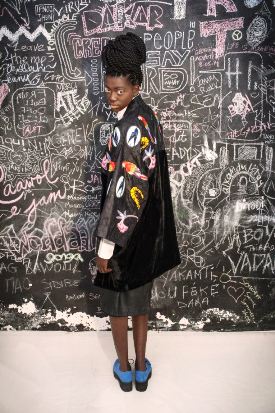 Selly Raby Kane
Selly Raby KaneIkiré Jones
Ikire Jones is a collaboration label between designer Wale Oyejide and tailor Sam Hubbler. It strives to successfully combine Western African heritage with Italian tailoring to produce a unique identity in all its menswear products.
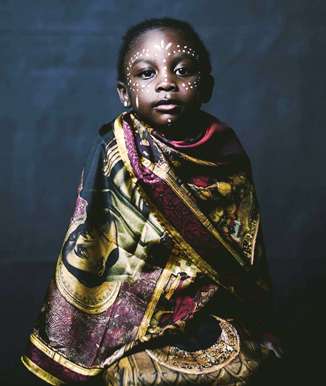 Born between Borders
Born between BordersThe brand seeks to tell stories whenever it releases a new collection, hoping to have some sort of social impact as well as an aesthetic one.
After Migration tells the story of African asylum-seekers living in Italy
Taibo Bacar
TAIBO BACAR is both a high fashion and ready-to-wear womenswear brand that is now fully established after being created in 2008 by the Mozambican male designer Taibo Bacar.
The line is known for sensuous, cut away shapes that celebrate womens’ curves and luxury or dramatic fabrics that are often embellished with lace or beading. Small clutch bags accessorize the outfits.
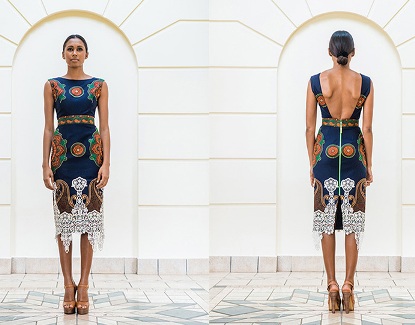
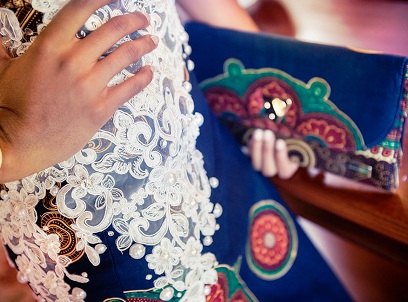
Mille Collines
Rwanda based fashion label, Mille Collines is a sophisticated brand of clothing, accessories and jewelry for the modern woman who appreciates where she comes from but wants something... out-there.
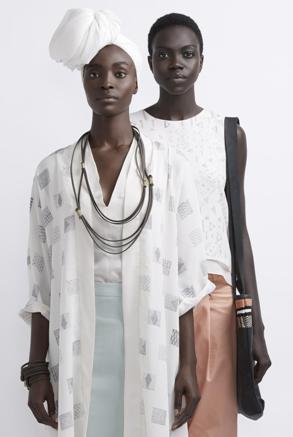
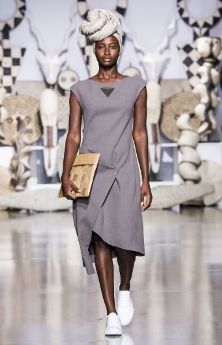 Mille Collines, turban
Mille Collines, turbanFluid lines, turbans, strings of loose beads, embroidered glass beads on panels of dresses, layers of cloth, tonal prints, this all adds up to a luscious, striking effect....truly eye catching.
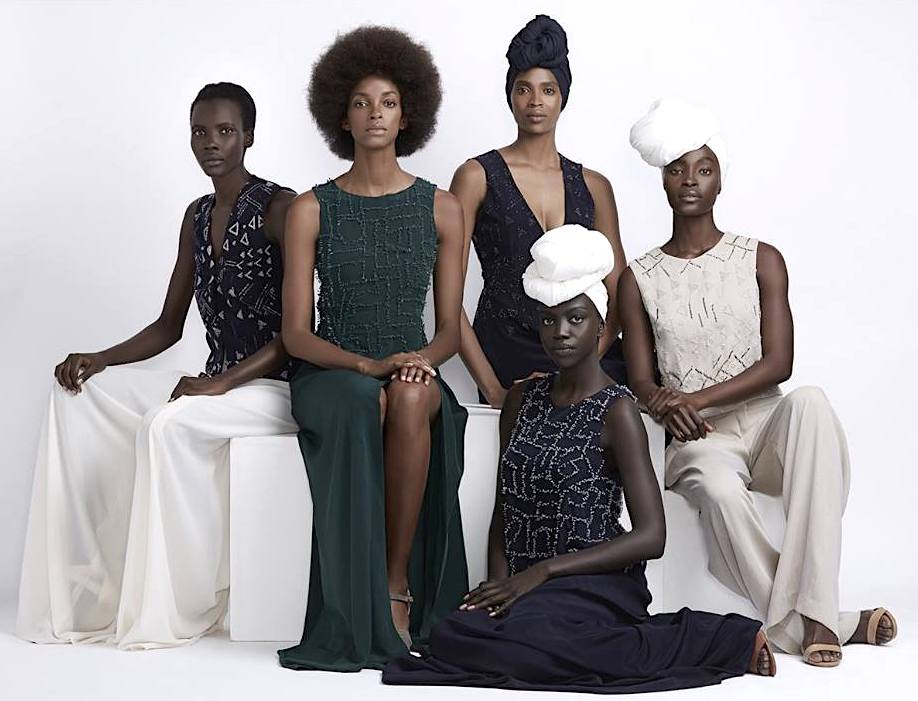 Mille Collines Debonairafrik
Mille Collines DebonairafrikNewcomers on the Block
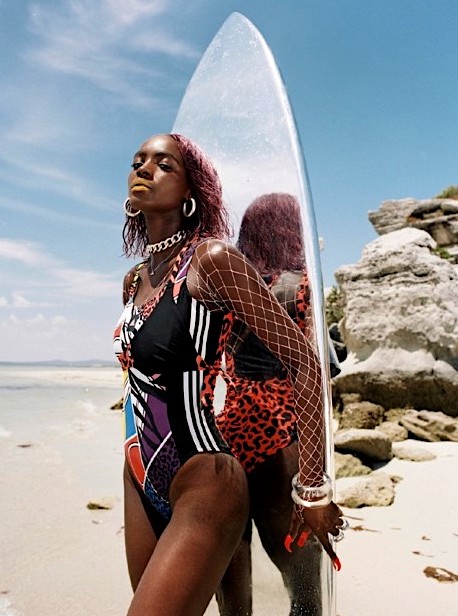 Rich Mnisi, SA in collaboration with Adidas
Rich Mnisi, SA in collaboration with AdidasRising stars...
Thebe Magugu, SA
This young South African designer is already the winner of the LVMH Prize and was named as GQ's rising star of 2019. He is known for his very feminine design; shirt dresses and coats, headwear, boots and patterned fabrics.
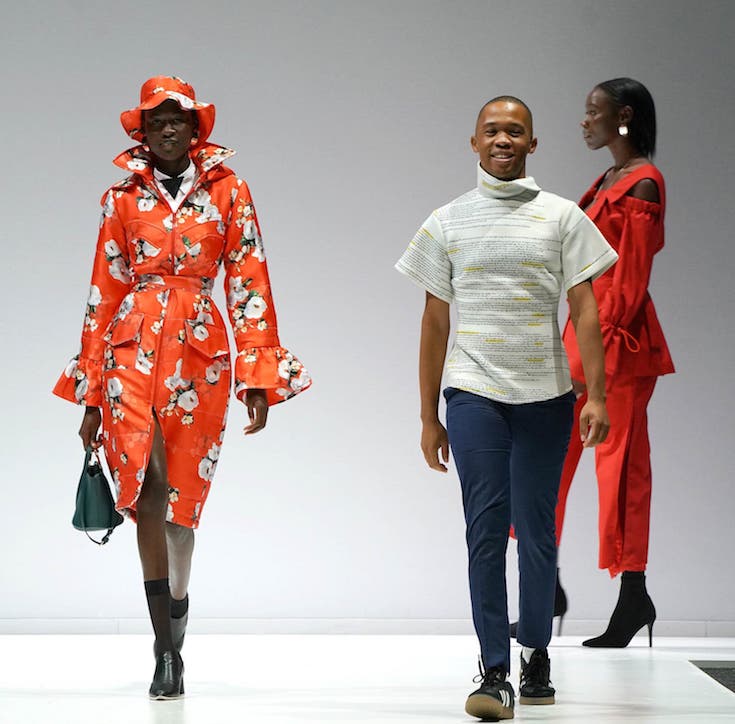
Kenneth Ize
Kenneth Ize debuted on the Paris runway in 2020 with Naomi Campbell as a model and he hasn't stopped since. The traditional asoke fabric he uses from Nigeria has the hand feel of couture.
Focusing on reinterpreting the craft of traditional textiles, he has built a factory in Ilorin, Nigeria and 80% of his fabrics are woven there with the finishing done in Europe. Also working with silk knitwear and wedding gowns, this young designer appears to be able to turn his hand to anything, all of it beautiful.
Taking it to the Streets
'3 Days in Dakar' GQ magazine
Luxury magazine GQ went to Senegal and filmed models and local Dakarois on the streets.
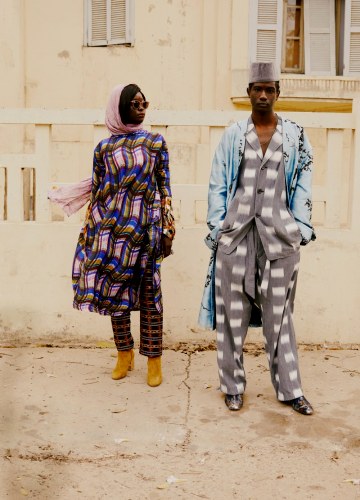 GQ magazine, 'Three days in Dakar'
GQ magazine, 'Three days in Dakar'The result was an extremely exciting photo shoot and will probably have a major influence on the way people dress. The fantastic freedom it will give to allow pattern about pattern to be layered allowing a creativity to individual expression that will capture the imagination and soul of not just fashion followers but those who choose to express their personality in their dress.
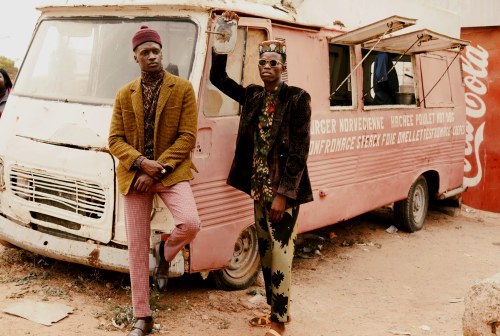
Do look at this link, We went to Dakar, Senegal... it will delight and inspire!
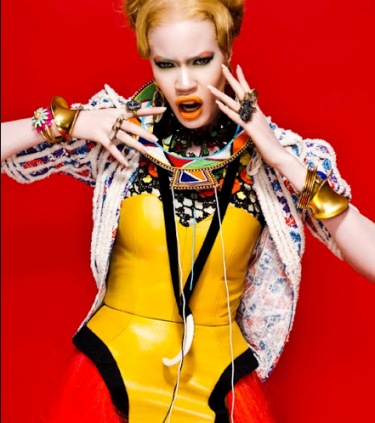
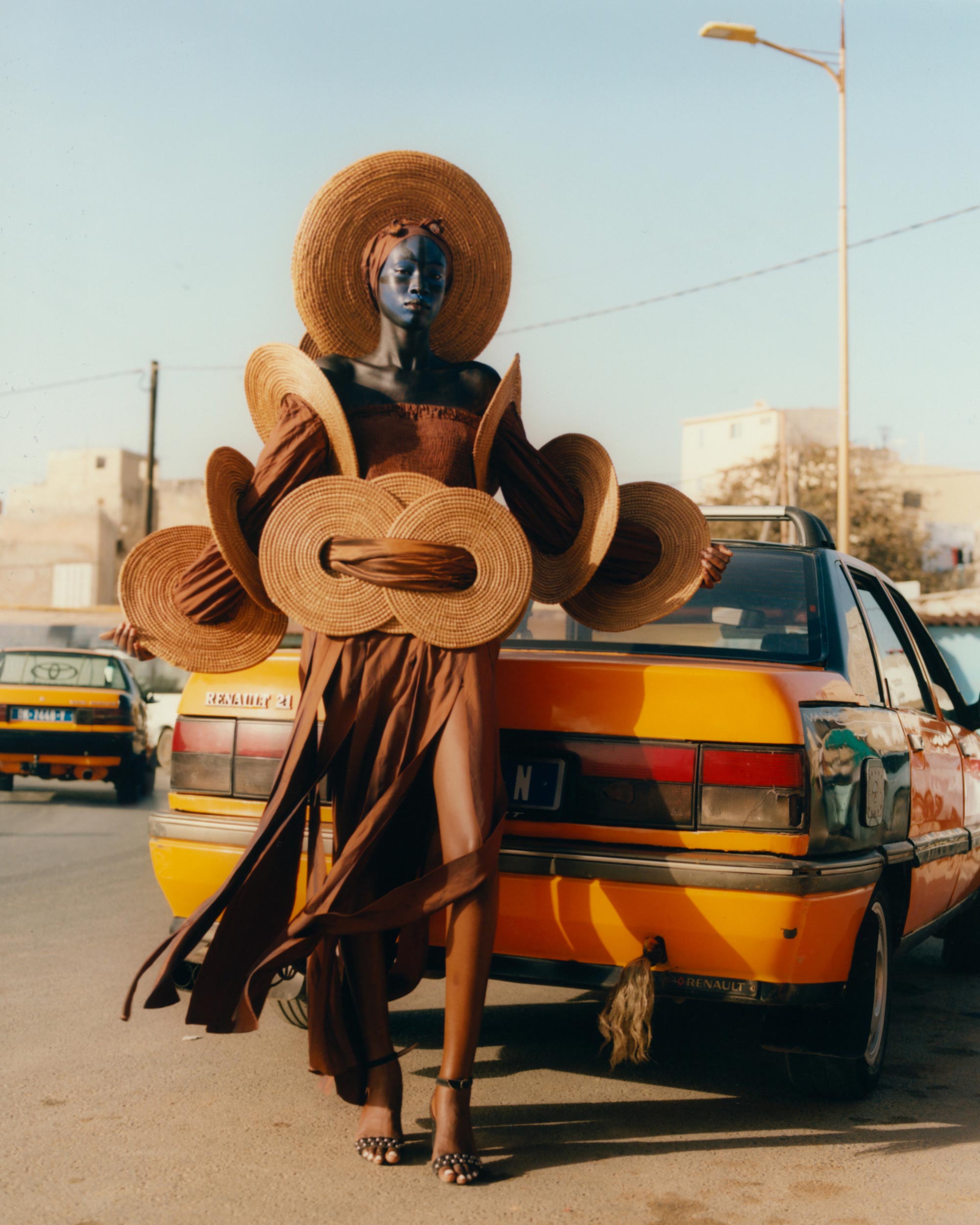
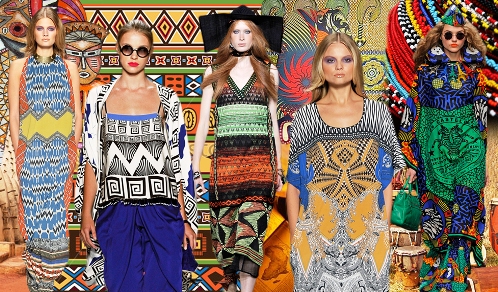
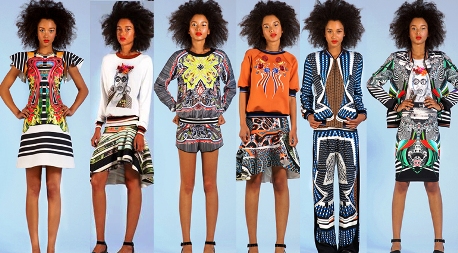
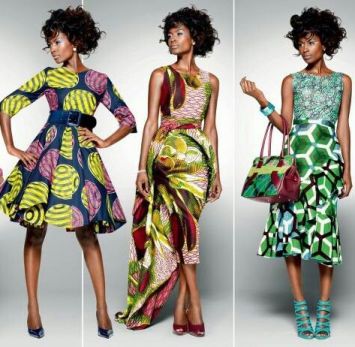
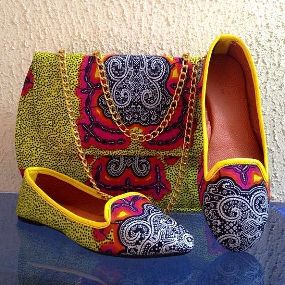
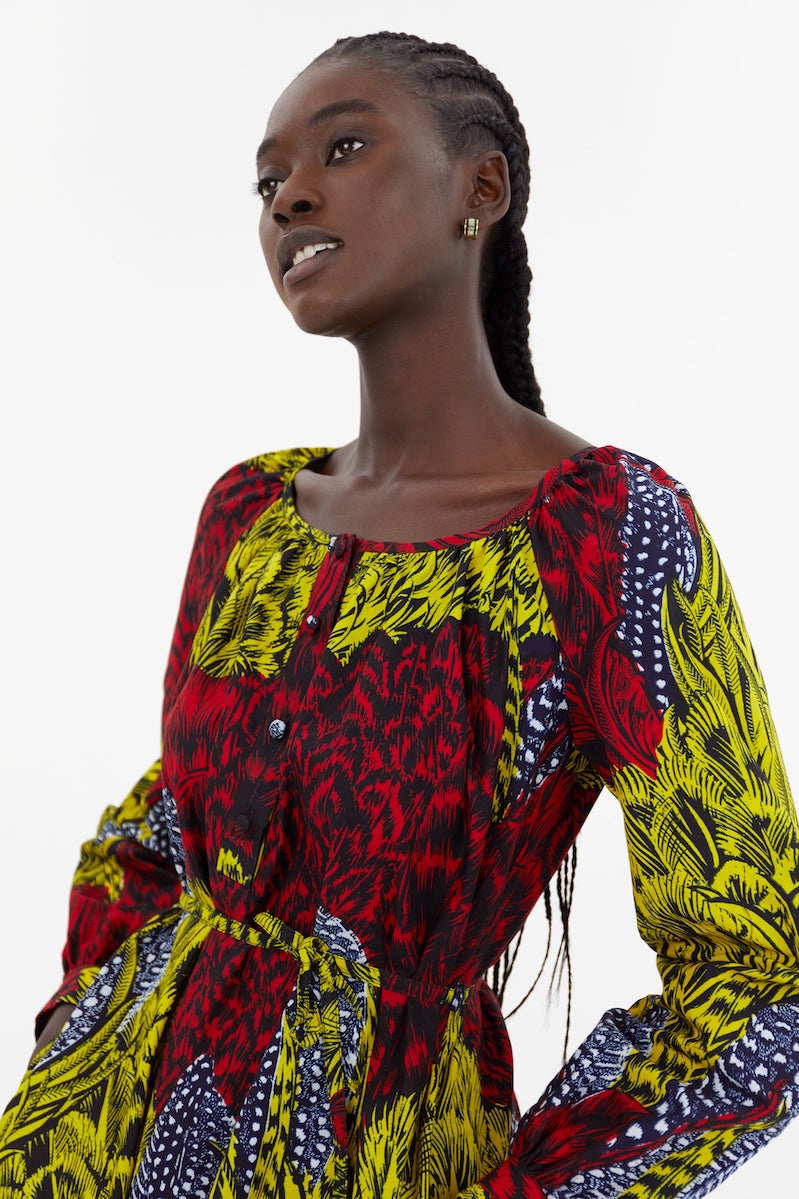
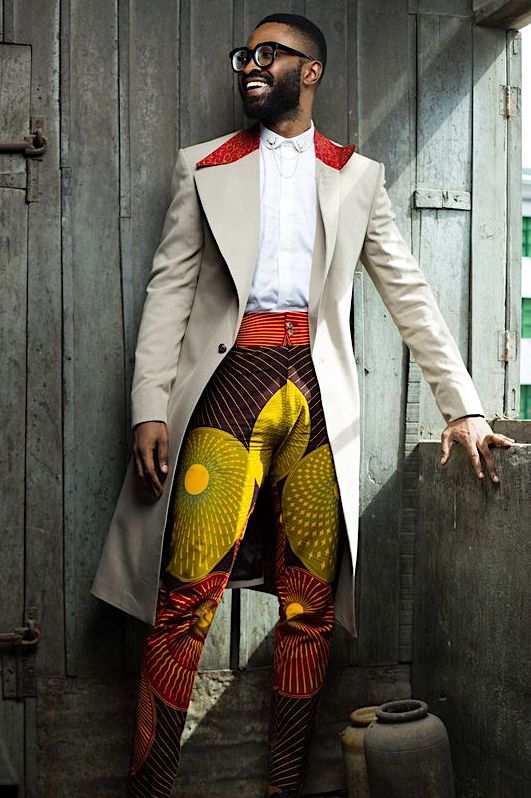
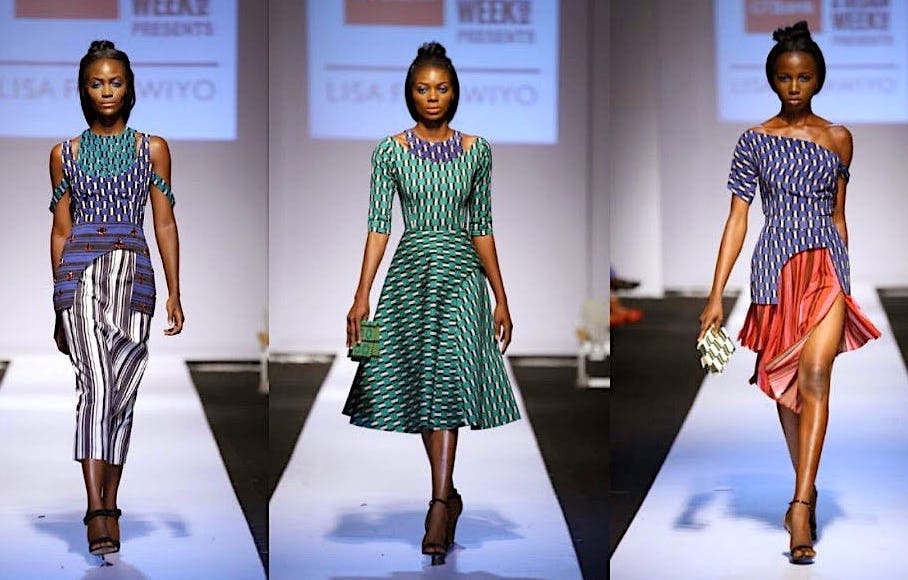
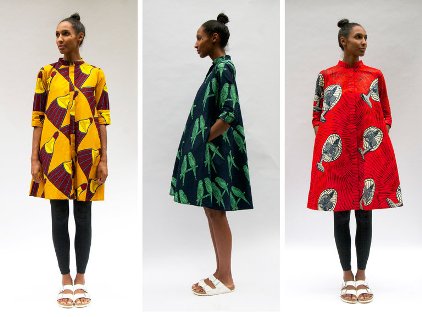
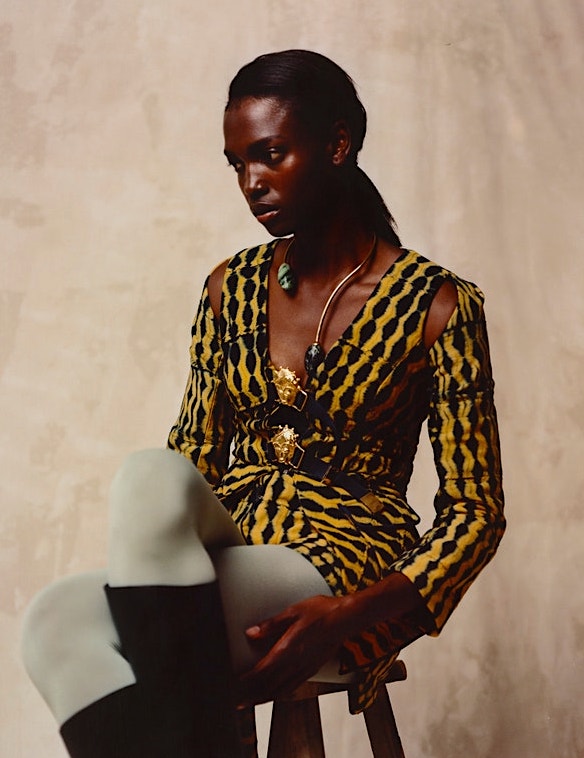
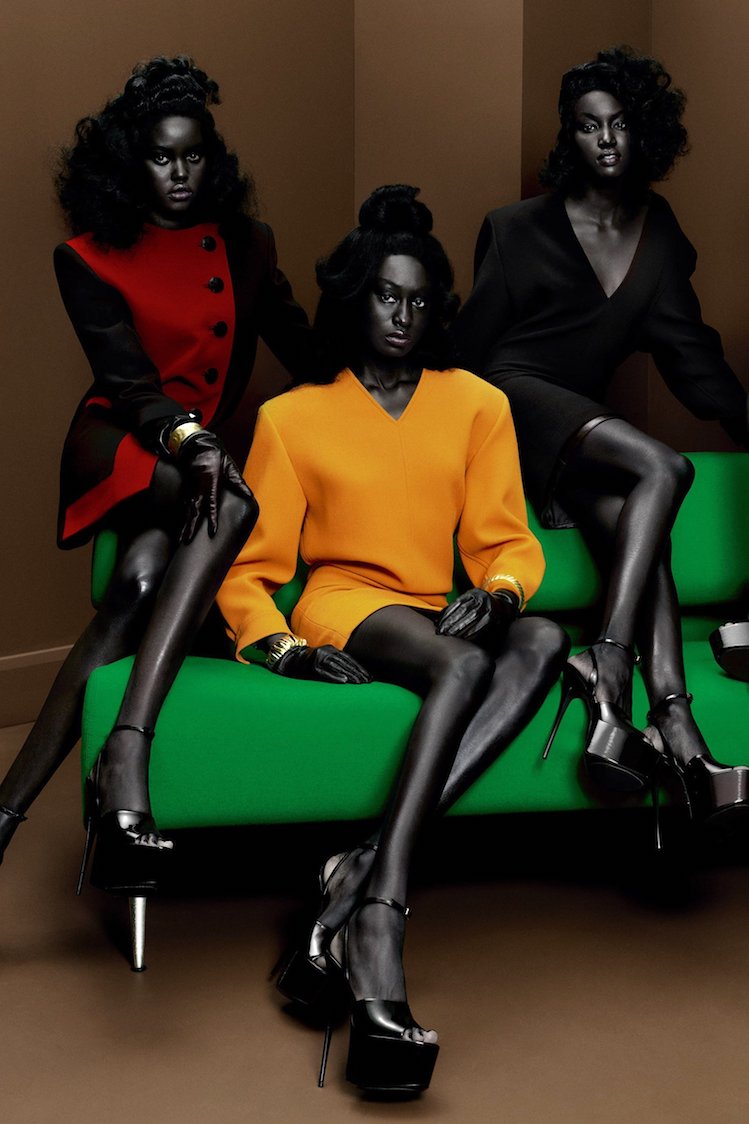
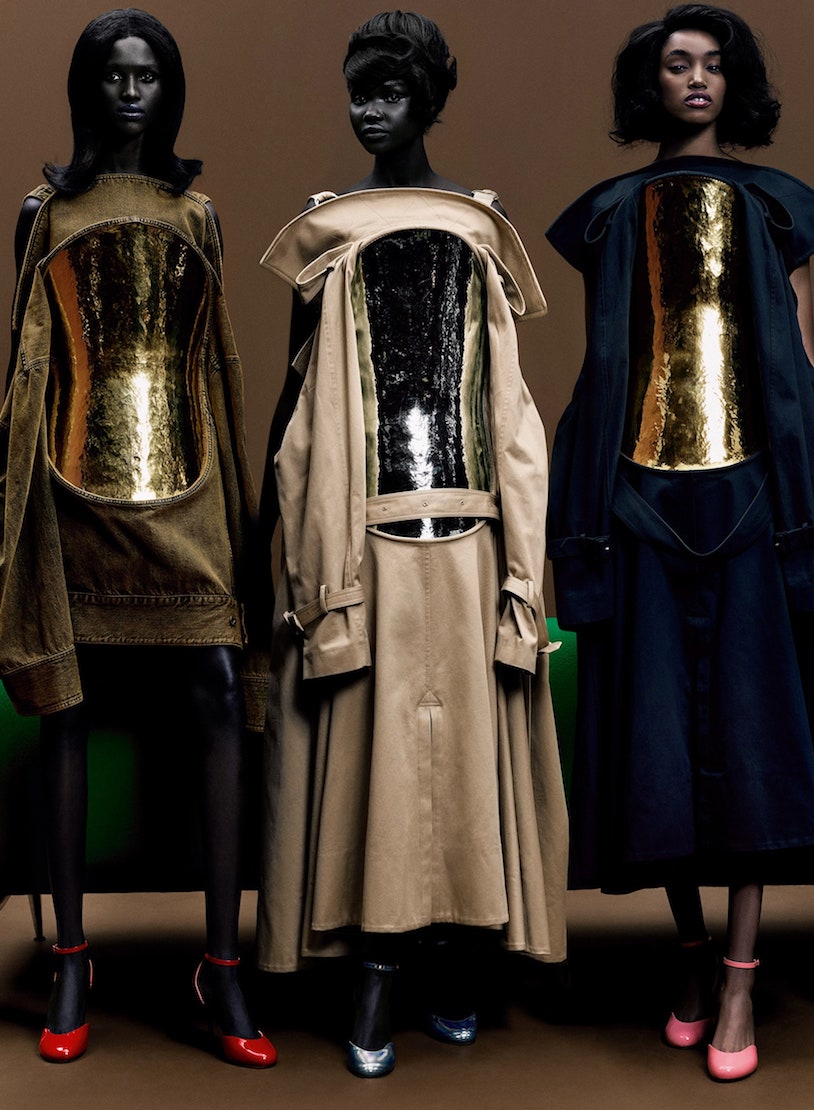
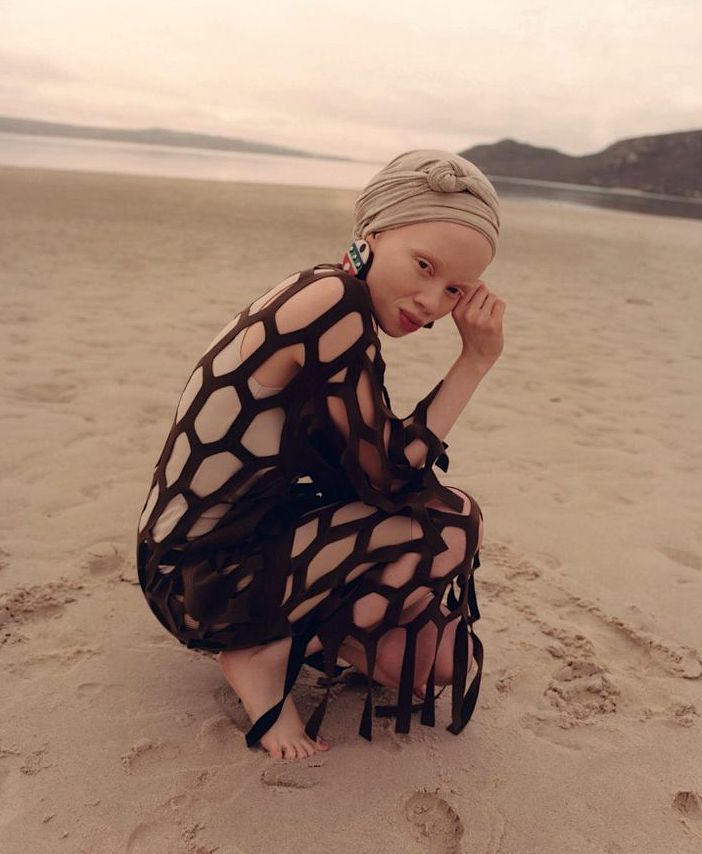
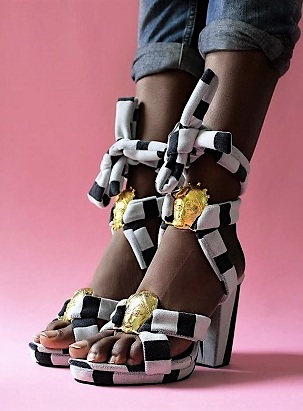
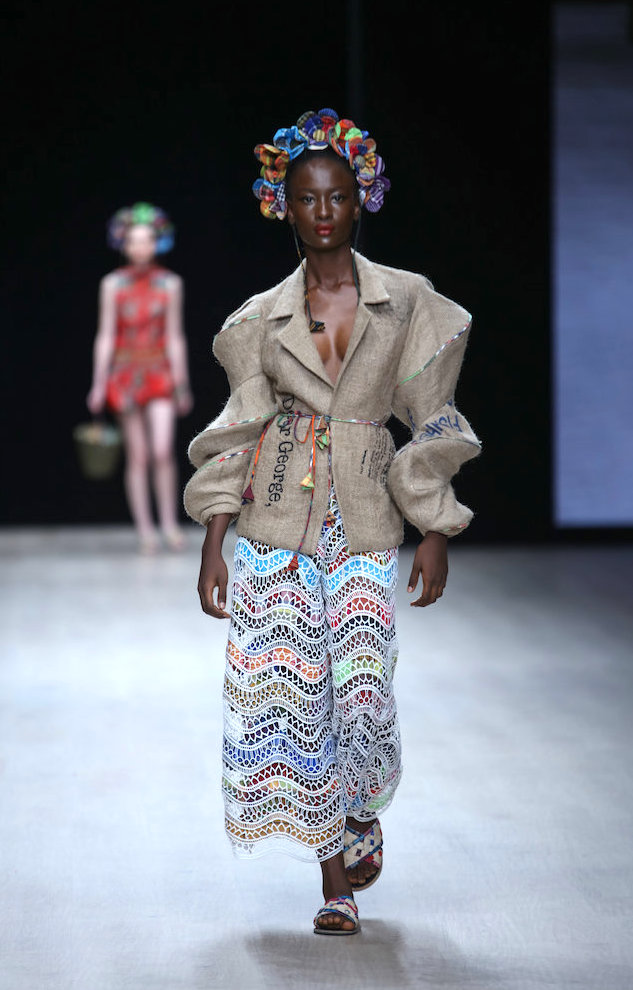
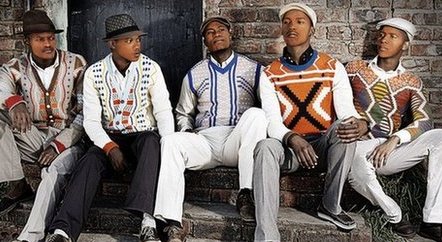
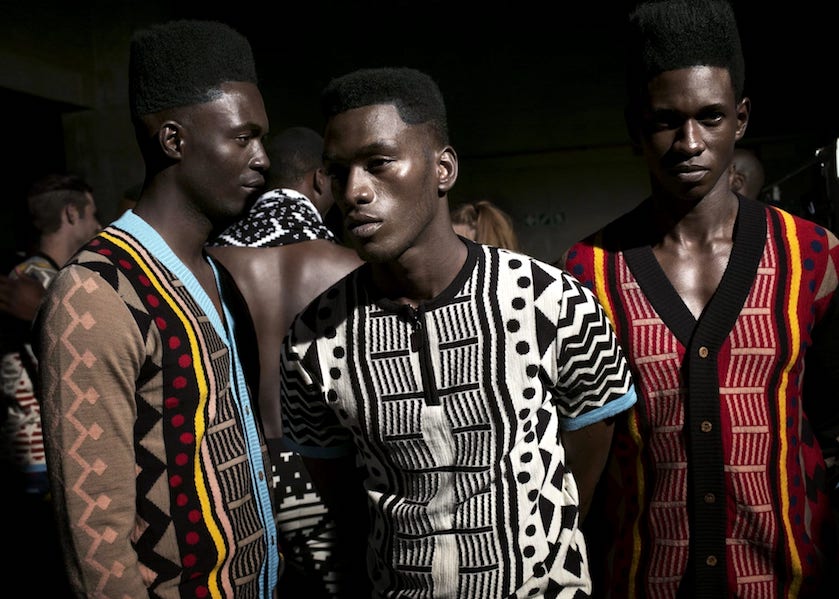
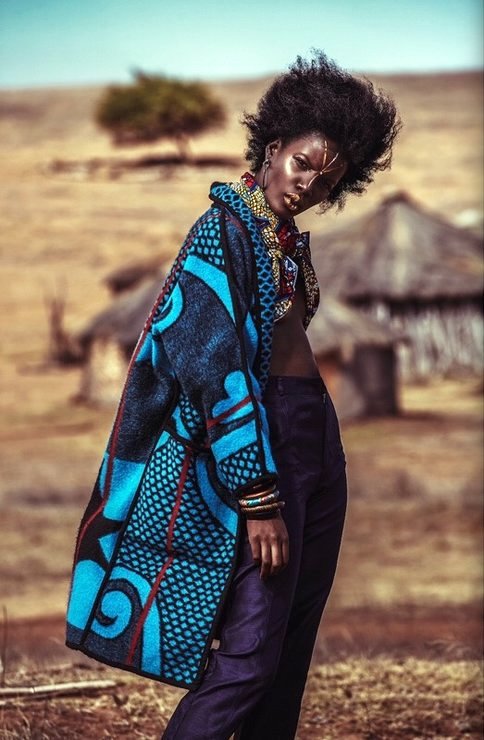
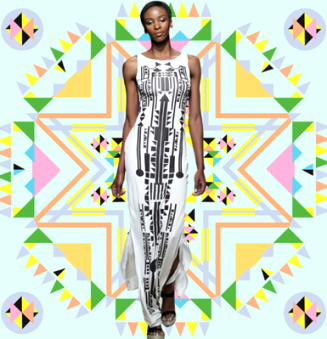
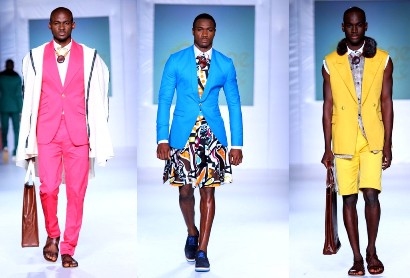
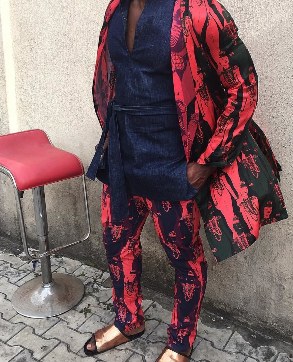
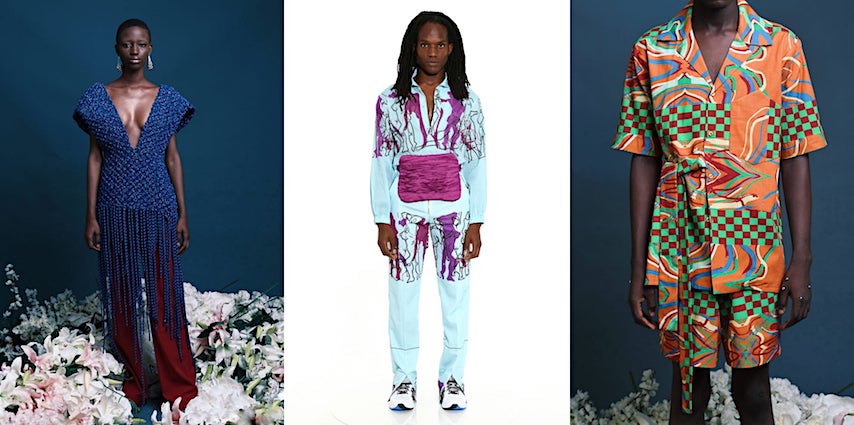
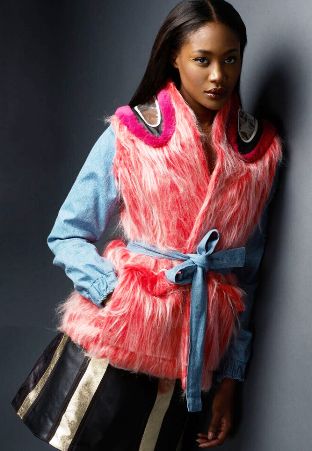
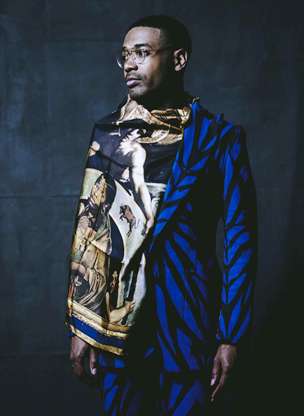
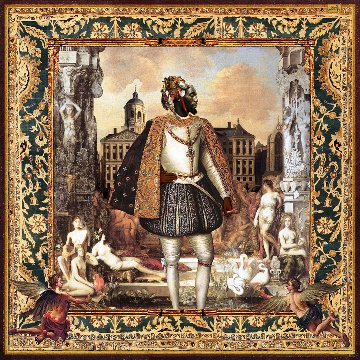
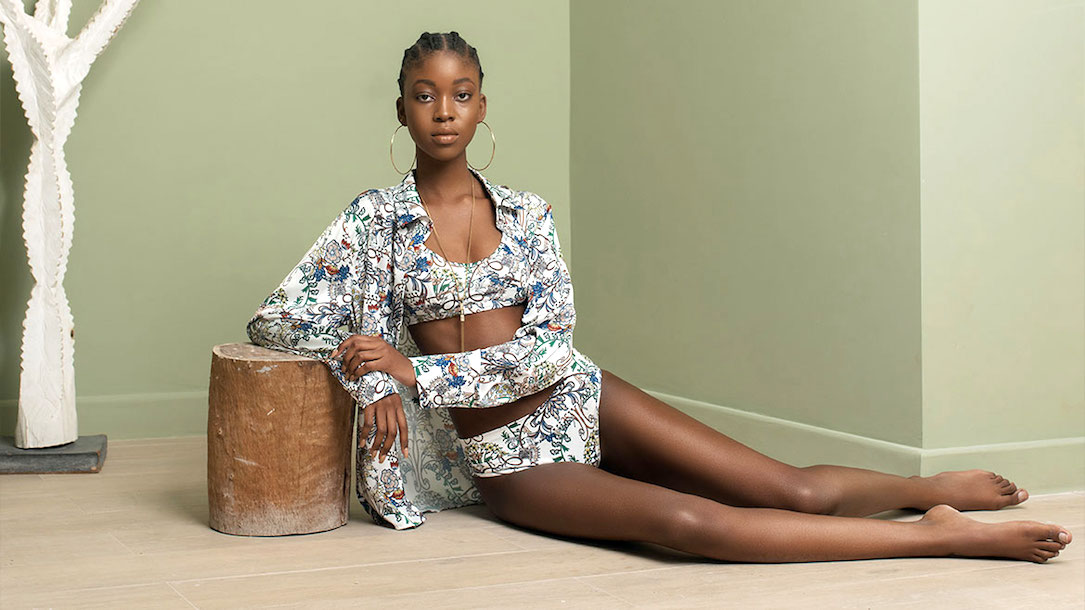
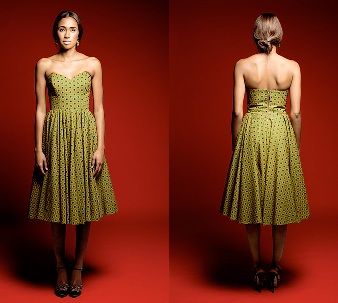
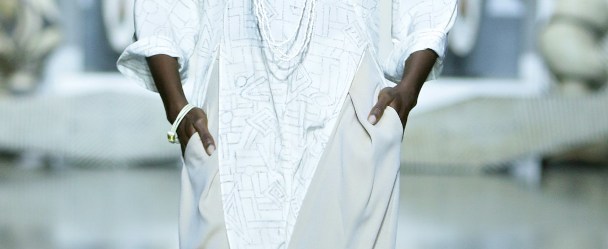
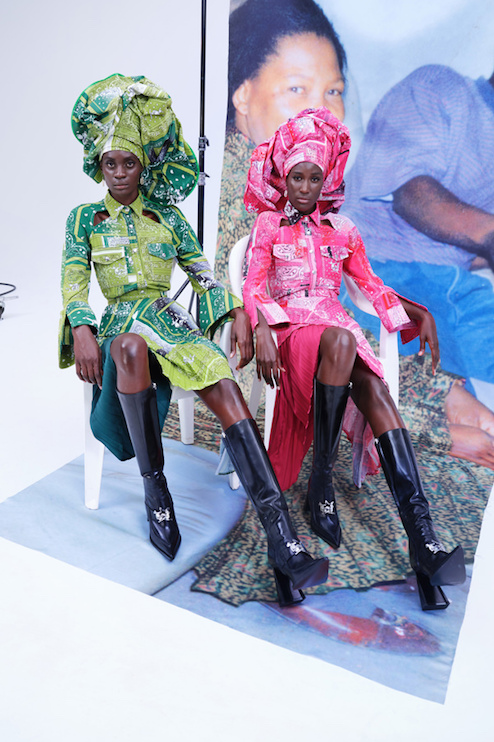
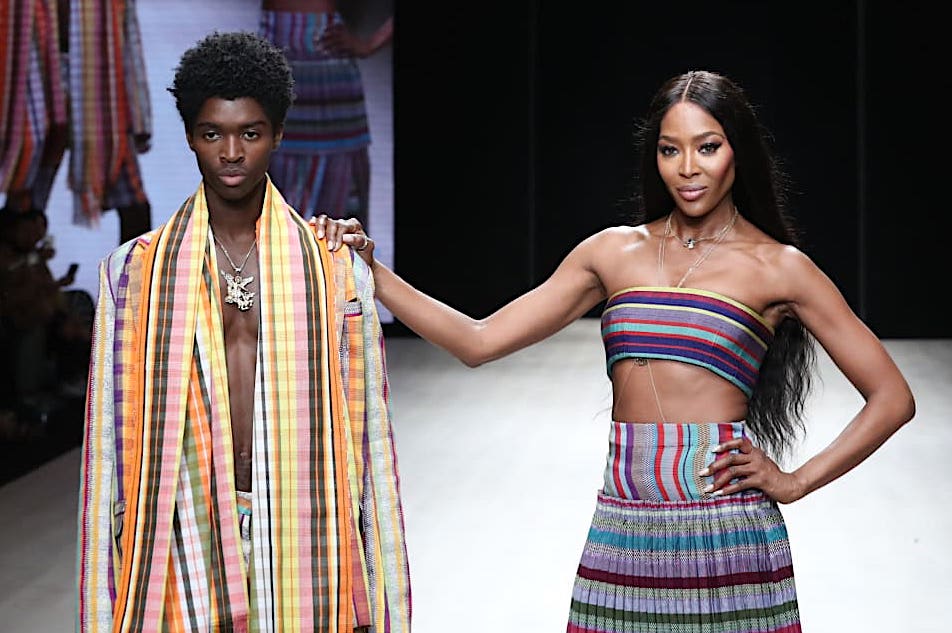
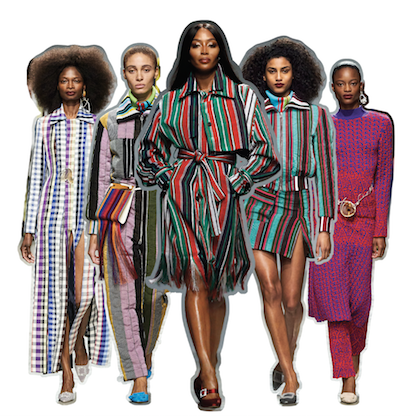
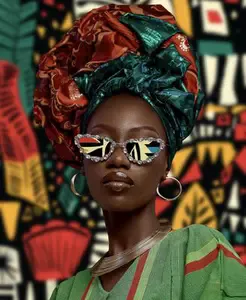
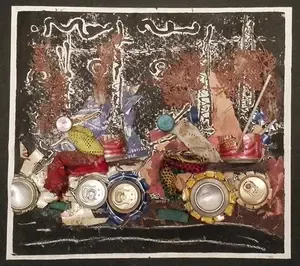
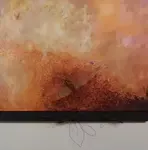

New! Comments
Have your say about what you just read! Leave me a comment in the box below.